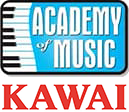The Benefits Of Online Music Lessons
This year, online learning has become the new norm. Schools have closed and families have stayed inside in their efforts to maintain physical distancing. But for those who want to further their education during this time, the pandemic might stand in the way of their goals. Thanks to technology, there’s a solution to this problem – virtual lessons. They have risen in popularity since the outbreak of COVID-19. While some students will miss the intimacy [...]


